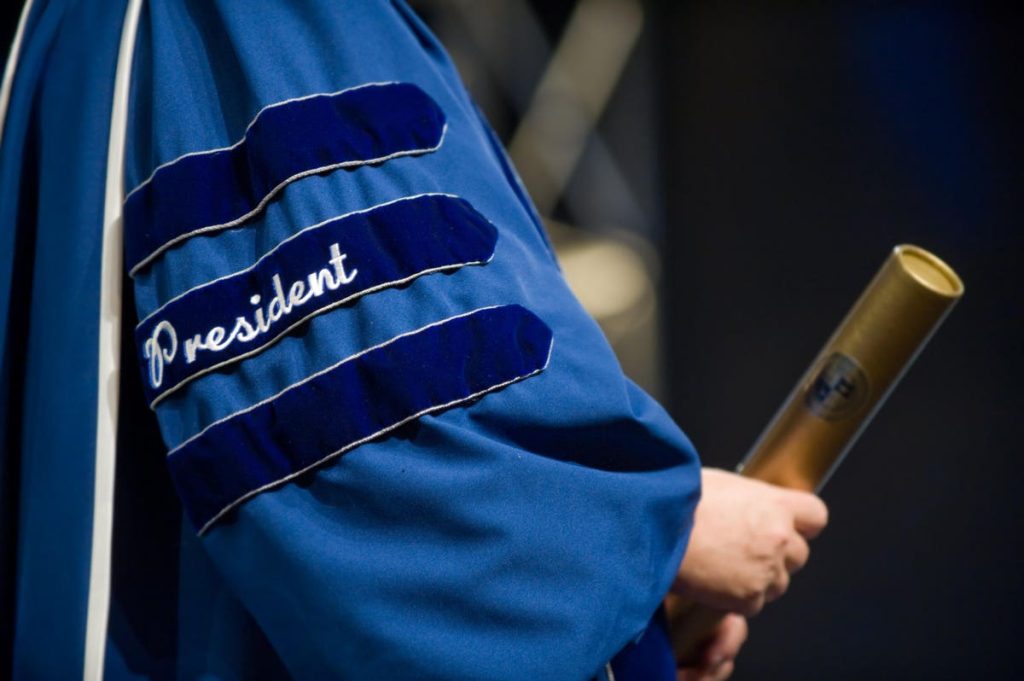The Rutgers University senate voted no confidence in president Jonathan Holloway on Friday. The vote was 89-47 and came after several unpopular actions Holloway had taken in recent months, including not renewing the contract of Nancy Cantor, the popular chancellor of the Newark campus, and threatening to file an injunction against Rutgers faculty during their strike last spring.
The Rutgers vote was the third such no-confidence vote against a university president in just the past month.
- On September 19, the faculty of Webster University voted 59-41 to express no confidence in Chancellor Beth Stroble and President Julian Schuster over concerns about their financial management of the institution.
- And in a case that’s drawn prolonged national attention, the West Virginia University Assembly voted it had no confidence in the leadership of President E. Gordon Gee. That vote, which passed by an overwhelming 797-100 margin, followed Gee’s proposal for massive cuts to WVU academic programs and faculty positions.
And that’s not all. Earlier this year, no-confidence votes in university leaders were also passed at several other institutions, including Bellarmine Univeristy, West Texas A&M University, Jackson State University, and the University of Arizona. According to a Chronicle of Higher Education analysis, at least 24 institutions took no-confidence votes in 2021, continuing an upward trend across the past decade.
Although votes of no confidence by the faculty carry no legal or official authority, they’re not without their consequences. Intended to upbraid a president, criticize a governing board, or call for the firing or other administrators, they often are an effective way of publicly dramatizing a faculty’s dissatisfaction with an institution’s leadership. While they might not be a knock-out punch, they still can bruise leaders. leaving them in a weakened state.
So what gives now? Why this spate of no-confidence votes? In our forthcoming book Colleges On the Brink, Chuck Ambrose and I discovered that while the reasons for no-confidence votes vary from institution to institution, the most common scenario in recent years has been faculty displeasure with large-scale academic restructuring and budget reductions directed by presidents and chancellors. Often those complaints center around what the faculty perceive to be administrators’ insufficient regard for shared governance in decision-making and financial affairs. They typically occur at institutions that are in very difficult financial straits.
How effective are no-confidence votes? Many observers dismiss them as merely symbolic, an acute symptom of chronic faculty unrest. But the Chronicle report cited above suggests they have more power than simply a show of angry hands. Of the 235 no-confidence votes between 1989 to 2022, just over half – 51% – of the leaders who’d been the target of the vote had left office within a year. A separate study of 57 no-confidence votes found that in 32 of those cases, the campus leader was out of office within six months.
While some institutions have formal guidelines for conducting no-confidence votes, others do not. They define the process for drafting a resolution, determining who gets to vote on it, and deciding how the vote will be taken as they move forward.
Even though no-confidence votes are non-binding, some faculty are reluctant to use them, nonetheless. Some may fear retribution from administrators, the governing board, or even other faculty. Others may worry that such a vote reflects poorly on an institution and will cause students, policy makers and the general public to doubt its stability and lose their own confidence in it.
However, as more institutions face serious budget deficits, and administrators feel forced to take dramatic steps to right the ship, expect more no-confidence votes to be forthcoming. History suggests they are often an effective means for faculty to challenge the process and results of major institutional changes.
Read the full article here










